CONNECTED BY WATER
Thank you, Tony, for that introduction. Again, it’s great to be here.
Many people in this meeting will remember all too well where they were in November 2019.
I remember standing in Lang Avenue in Barnsley, where in the freezing cold, around 70 homes were flooded.
The residents had been made effectively homeless. They’d lost precious possessions. Their lives had been upended.
I went to Fishlake very early one morning, and the place had the feel of a disaster movie.
Waters running perilously high, the army on the streets, the emergency services working tirelessly to save lives and homes.
I remember visiting Bentley with my Labour colleague Ed Miliband and Conservative Secretary of State Robert Jenrick – MPs from different parties standing together in the home of an 83 year old woman, with her ground floor flooded and almost everything destroyed.
She had lost her husband not long before. Now she faced losing much of what was familiar and precious to her.
Those floods directly affected around 1,000 South Yorkshire homes and 565 businesses. Their impact went far beyond material damage.
Flooding carries a human cost, of lives disrupted, of futures compromised, of emotional trauma and personal hardship.
But as we all know, what were once in a lifetime disasters are now increasingly commonplace.
It’s one of the many red flags for the profound damage we are doing to our climate.
Arguably the most fundamental duty of any public servant is to keep people safe.
As Mayor I knew that sooner or later the floods would come again. We had to be ready.
Not just for the next crisis, but for a fundamentally changed environment.
That is what drove the creation of the plan we are launching today.
I’d like to thank each of the partners that got us here individually. But there are more than 40 of them, from the Woodland Trust to the Yorkshire and Humber Drainage Boards, via our local authorities, the Environment Agency, and Sheffield United Football Club – so it might take a while.
I’m deeply grateful to all of you.
Connected by Water finally gives us what we need – a serious plan to systematically address the flooding threat in South Yorkshire.
It covers almost £400m of investment in 53 projects across the whole region. So long as we implement it, this is a worthy response to the events of 2019.
But ambitious as it is, it is not its scale that makes this plan ground-breaking.
For the first time ever in the UK, we are tackling managing flood risks the way it should be done – as a cross cutting, comprehensive strategy.
One that is geographically coherent, bringing together the whole of the catchment area which influences flood risks in the region.
One that takes a long-term, adaptable approach, rather than being a knee-jerk reaction to the most recent crisis.
And just as importantly, one that deeply considers the array of related issues that surround flood risk – climate change, habitat protection, species loss, community regeneration and quality of life, job creation, skills.
Connected by Water is precisely the right title, because it connects flood prevention to those broader horizons – in space, in time, in policy.
It buttresses that with a supporting structure of specific, measurable, attainable, relevant, time-bound and evidence-driven objectives, and an emphasis on better integrating technology across the sector, from digital maps to real-time telemetry.
All together, it adds up to a fundamentally different approach, an innovation which sets a precedent for the whole country.
For me this system-wide approach should shape everything we do.
It’s why we’re reforming our procurement to leverage more apprenticeships and greater spending in the local economy.
It’s why our Net Zero plan will aim to reduce fuel poverty as well as carbon emissions, and link to our skills programme so we can create well-paid local jobs.
Two aspects of Connected by Water express this approach particularly well.
First, it is painfully clear that we cannot build our way out of flood risk with concrete.
Hard infrastructure has its place, but on its own it is a short-term response, limited to treating symptoms of the problem in one small area without considering its roots upstream or knock-on effects.
Faced with a changing climate, we have to work with nature, not against it.
That is a matter of hard practicality, to create more effective and affordable protection, that actually reduces risk rather than just shifting it downstream.
It allows us to make flood prevention relevant to reducing emissions that ultimately are driving the rising threat of floods.
And it brings a host of supporting benefits, from creating wetland habitats to giving communities precious access to nature.
There is a good deal more to do, but Connected by Water lays the foundation for a fundamental change in approach.
We must make nature-based solutions not just one tool among others, but the core of our strategy – not just in South Yorkshire but across the whole of the UK.
A second remarkable aspect of this plan is the breadth of partnership it brings together.
That goes up, to national bodies like the Environment Agency and the government.
It goes out, to local authorities, regional agencies, universities, and organisations from the National Trust to Network Rail.
And crucially it also goes down, to communities and civil society organisations from the Woodland Trust to local Flood Action Groups.
From tree planting to early warning, we’re committed not just to promoting awareness, but to working in partnership at the grassroots to create better policy and increase local benefits.
Again, there are wider lessons here, if we can get this right.
But however good our plan, it will of course mean nothing if it is not funded and implemented.
It is a pleasure for me to confirm today that the Combined Authority has dedicated another £150,000 to help take the Connected by Water strategy forward, which we hope will be matched by other partners.
This will enable vital actions like modelling how climate change will affect flood risks, and engaging with Parish Councils, community groups and businesses to create priority area action plans.
We’ve a good track record of putting skin in the game, notably making innovative use of £5.5m of gainshare to support seven of the most urgent projects identified under our 2019 Priority Program. More will follow.
But of course, for action on the scale we need, central government must play its part.
We’ve made real progress here. The Environment Agency’s new six-year Medium Term Plan almost triples the planned spend for South Yorkshire, to about £160m.
It’s taken some doing – since 2019 I’ve led parliamentary debates, asked parliamentary questions, written to ministers, and held a Flooding Summit with the Secretary of State.
But the funding does mark a real step change in investment – and I’d like to express my thanks to the government for that.
Of course, I would also like to lobby hard for more. Because we still have major gap to fill to make Connected by Water a reality – around £104m just to deliver the 27 highest priority schemes.
We will do our part – I am looking to the government to do theirs.
The case for that investment was already powerful – with an estimated five pounds of damage avoided for every pound spent. The strategic framework Connected by Water provides makes the argument overwhelming.
But investing in flood management demands we also invest in addressing the roots of the threat.
The government frankly needs to do much more to drive decarbonisation with anything like to the urgency it demands.
From housing retrofits to bus travel, we are losing opportunities not only to get to Net Zero but to create jobs, help people out of poverty, and reduce dependence on fossil fuels from authoritarian regimes.
Again, the price of inaction vastly outweighs the cost of action. Again, we need government to understand that long-term, wider picture. We are not just Connected by Water, but Connected by Climate.
So, groundbreaking as Connected by Water is, it is also a foundation on which we must build higher. That applies to the immediate agenda of flood prevention in South Yorkshire. But it also applies far beyond it.
We should all feel proud of what we have produced. Now, we need to draw inspiration from it, and act.



